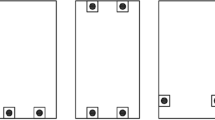Abstract
Connections are often the weakest link in timber structures so that their failure during fire exposure may result in local or total collapse of a building. The failure modes are complex and poorly understood due to wood’s orthotropicity, the temperature and moisture dependency of wood’s properties, and the presence of metal fasteners that complicates the stress distribution and changes the process of heat transfer into the timber element. In this study, we investigated the coupled physics of heat and mass transfer in a test specimen made from spruce, with a steel fastener inserted in a pre-drilled hole. It imitates a central slice of a timber-to-timber connection exposed to the elevated temperature of 523 K from one side. The heat induced redistribution of the hygroscopic moisture in wood was quantified and visualized by means of neutron radiography. The temperature gradient was measured inside the specimen, at different distances from the heated surface. As the temperature increased in wood, moisture was displaced downstream of the heat source, resulting in a zone with increased moisture content ahead of the drying front and beneath the steel fastener. This wet front occurred where the temperature was below the water evaporation point. It was shown that the steel fastener affected the transport of heat and moisture within the test specimen. The occurring phenomena during the transient state may play a critical role in the embedment strength of wood and therefore influence the load-carrying capacity of timber connections in fire.







Similar content being viewed by others
References
Madsen B (2000) Behavior of timber connections. Timber Engineering Ltd, Canada
Peng L, Hadjisophocleous G (2011) Predicting the fire resistance of wood–steel–wood timber connections. Fire Technol 47:392–399
Maraveas C, Miamis K, Matthaiou CE, Maraveas C (2013) Performance of timber connections exposed to fire: a review. Fire Technol. doi:10.1007/s10694-013-0369-y
Chen G, Keey RB, Walker JCF (1997) The drying stress and check development on high temperature kiln seasoning of sapwood Pinus radiata boards. Holz als Roh-und Werkstoff 55:59–64
Sedighi-Gilani M, Boon M, Fife J, Ghazi Wakil K (2013) Dynamic of micro-cracks initiation in hardwood in pyrolysis, investigated by synchrotron X-ray tomography. Wood Sci Technol 47:889–896
Ostman B (1985) Wood tensile strength at temperatures and moisture contents simulating fire conditions. Wood Sci Technol 19:103–116
Moraes P, Rogaume Y, Boequet JF, Triboulot P (2005) Influence of temperature on the embedding strength. Holz als Roh-und Wekstoff 63:297–302
Young S, Clancy P (2001) Compression mechanical properties of wood at temperatures simulating fire conditions. Fire Mater 25:83–93
Malanga R (1995) Fire endurance of lightweight wood trusses in building construction. Fire Technol 31:44–61
Lenth C, Sargent R (2008) Wood material behavior during drying: moisture-dependent tensile stiffness and strength of radiata pine at 70–150°C. Drying Technol 26:1112–1117
Pearson H (2010) Material properties and stress modeling of radiata pine at high temperature. PhD Thesis, University of Waikato, Hamilton
Pearson H, Gabbitas B, Ormarsson BS (2012) Tensile behaviour of radiata pine with different moisture contents at elevated temperatures. Holzforschung 66:659–665
Reszka P (2008) In-depth temperature profiles in pyrolyzing wood. PhD dissertation, University of Edinburgh, Scotland
Siau J (1984) Transport process in wood. Springer-Verlag, New York
Leon G, Cruz-de-Leon J, Villasenor L (2000) Thermal characterization of pine wood by photoacoustic and photothermal techniques. Holz Roh-und Werkstoff 58:241–246
Sonderegger W, Hering S, Niemz P (2011) Thermal behaviour of Norway spruce and European beech in and between the principal anatomical directions. Holzforschung 65:369–375
White RH, Schaffer EL (1981) Transient moisture gradient in fire-exposed wood slab. Wood Fiber Sci 13(1):17–38
Sedighi-Gilani M, Vontobel P, Lehmann E, Derome D, Carmeliet J (2013) Moisture migration in wood under heating by thermal neutron radiography. Exp Heat Transfer 27(2):160–179
Sedighi-Gilani M, Abbasion S, Lehmann E, Carmeliet J, Derome D (2014) Neutron imaging of moisture displacement due to steep temperature gradients in hardwood. Int J Thermal Sci 81:1–12
van der Heijden G, Huinink HP, Pel L, Kopinga K (2011) One-dimensional scanning of moisture in heated porous building materials with NMR. J Magn Reson 208(2):235–242
Gilani S, Ghazi Wakili K, Carl S, Hugi E, Vontobel P (2013) Visualizing moisture release and migration during and beyond dehydration of gypsum plasterboard by neutron radiography. Int J Heat Mass Transfer 60:284–290
Lehmann E, Vontobel P, Wiezel L (2001) Properties of the radiography facility NEUTRA at SINQ and its potential for use as European reference facility. Nondestruct Test Evaluat 16:191–202
Sedighi-Gilani M, Grifa M, Mannes D, Lehmann E, Carmeliet J, Derome D (2012) Visualization and quantification of liquid water transport in softwood by means of neutron radiography. Int J Heat Mass Transfer 55(21–22):6211–6221
Hassanein R (2006) Correction methods for the quantitative evaluation of thermal neutron tomography. PhD thesis, ETH Zurich, Switzerland
Hassanein R, Meyer HO, Carminati A, Estermann M, Lehmann E, Vontobel P (2006) Investigation of water imbibition in porous stone by thermal neutron radiography. J Phys D Appl Phys 39(19):4284–4291
Hassanein R, Lehmann E, Vontobel P (2005) Methods of scattering corrections for quantitative neutron radiography. Nucl Instrum Methods A 542:353–360
Acknowledgement
The experiments were carried out at the NEUTRA beamline of the Paul Scherrer Institute and EMPA Laboratories for Materials Science and Technology, Switzerland. The authors would like to acknowledge the support of Daniel Heer from EMPA for sample preparation and of Jan Hovind from Paul Scherrer Institute NEUTRA beamline for maintenance of neutron imaging soft- and hard-ware.
Author information
Authors and Affiliations
Corresponding author
Rights and permissions
About this article
Cite this article
Gilani, M.S., Hugi, E., Carl, S. et al. Heat Induced Desorption of Moisture in Timber Joints with Fastener During Charring. Fire Technol 51, 1433–1445 (2015). https://doi.org/10.1007/s10694-014-0416-3
Received:
Accepted:
Published:
Issue Date:
DOI: https://doi.org/10.1007/s10694-014-0416-3



